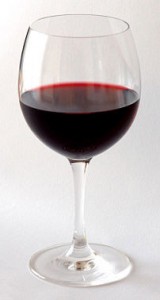Composition of wine

Wine contains approximately 1000 components of which water citric .2 to .7, lactic .2 – 3, malic 4.5, sorbic, acetic .5 to .7, glucinic traces, succinic up to 1,) residual sugar .8 – 180 grams/L, sulphates, chlorides, glycerol, acetaldehyde, phenols or phenolics to which tannins belong, phosphates, potassium, copper, iron, carbon dioxide, and sulphur dioxide.
The composition depends on grape variety, the soil on which it grew, composition of the soil, ripeness of the fruit at picking, winemaking technique and aging before bottling.
Alcoholic fermentation transforms sugar to alcohol, while malolactic fermentation converts part o0f the harsh malic acid to mellow lactic acid.
Barrel aging renders softness and imparts small amounts of tannin. It is a slow and controlled oxidation process. Winemakers monitor barrel aging very carefully and replace evaporated amounts by the same wine from another barrel.
Wines lacking acid taste “flat” and offer little or no enjoyment, yet overly acid wines are unpleasant. Acid-driven wines age much better and longer.
Alcohol contributes to mouth feel. High-alcohol wines are full-bodied, and alcohol has its own smell and contributes to the texture of wine. Highly alcoholic wines tire the palate after a glass or two.
Some winemakers partially de-alcoholise wines in specially designed machines (spinning cones or by reverse osmosis) or dilute it.
The same wine at different alcohol levels tastes different. The optimal taste can be determined by “spinning” the same wine to different levels of alcohol i.e 12, 12.5, 13, 13.5 etc.
Capitalized wines may or may not end up being unbalanced. This depends on the thickness of the skin and the ripeness of the grape. Picking time of the fruit is crucial, but in cool climate regions determining the ideal picking day is very difficult, as the weather is very unpredictable. Rain and frost are two unpredictable factors, but appropriate environmental conditions are crucial for a successful vintage.
Acidity in wine is measured mainly by tartaric acid (a.k.a titratable acidity), which is white, crystalline, and has a sour taste. It has antioxidant properties.
Citric acid is weak and slightly sour and acts as a preservative.
Lactic acid occurs during the malolactic fermentation during which harsh malic acid is partially converted to mellow lactic acid. It is used in food preservation and mainly for meat.
Malic acid is an extremely tart acid and occurs in wine used as a meat preservative.
Sorbic acid is a food preservative (E 200) and E 296 and occurs in wine.
Acetic acid is vinegar has a sharp taste and caused in alcoholic beverages by air-borne bacteria (acetobacter). A small quantity in wine gives a pleasant piquancy, but large amounts is a fault.
pH is a scale of measurement of effective acid concentration in wine. Low values of pH in wine indicate high concentrations of acidity (generally three or four on a scale of 14) and is proof whether the wine is worthy of cellaring.












Leave your response!